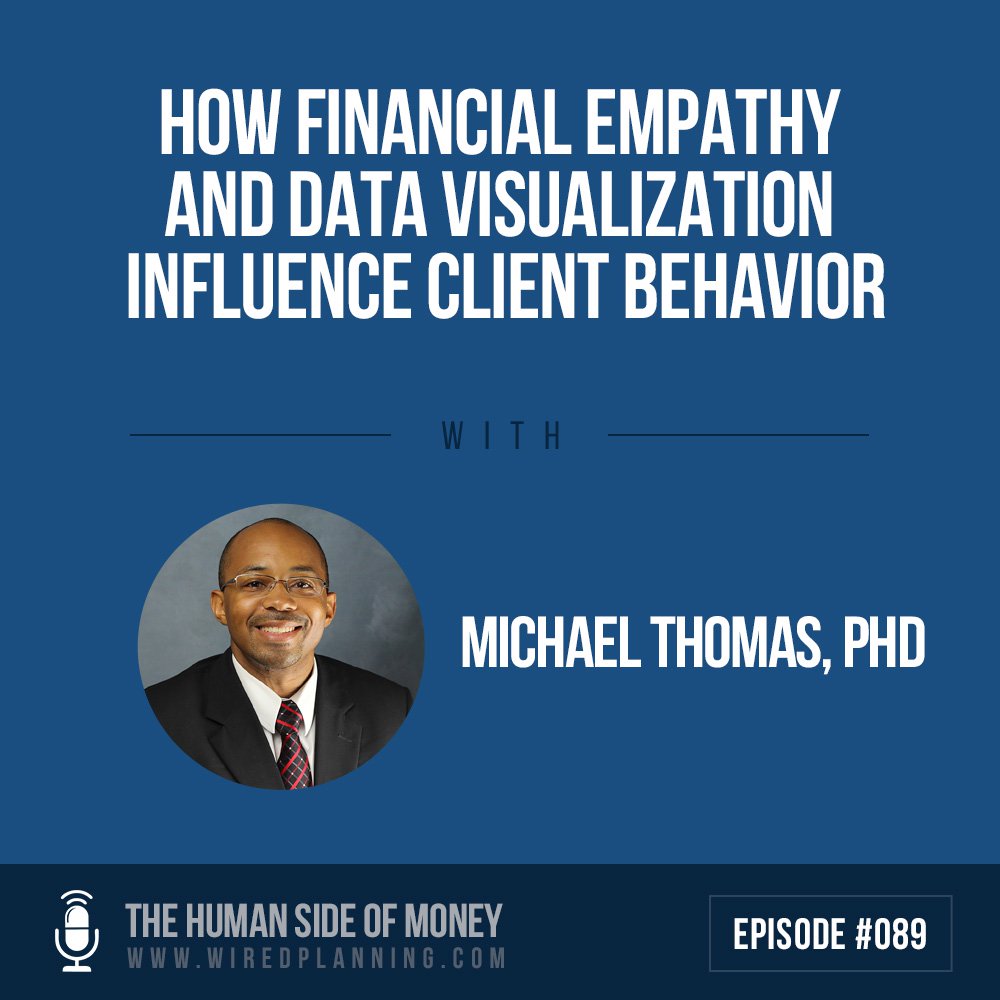Show Links
*If you want to be notified when the next episode packed full of practical tips and strategies to master the human side of advice will be released, you can:
- Subscribe to the Show
- Join the community of like-minded advisors and planners across the world being notified via email. You’ll also receive our monthly “Wisdom Round Up” newsletter. It’s the best content from around the industry on specific ways to apply the human side of advice in your practice, process, and conversations.
*The featured partner for this episode is a must-have tool for helping clients follow-through and implement advice. After all, the best advice is useless in the absence of execution. Rather than stressing about follow-up calls and emails, Knudge provides a built-in system designed to improve follow-through. Here’s the best part…you can try it for free with 12 clients.
Episode Summary
You can give a client a perfectly-constructed financial plan outlining exactly how to reach their goals.
But, if they don’t actually do any of the items listed on the plan, it’s useless.
You can propose a perfectly-allocated portfolio.
But, if they don’t invest their money, it won’t matter. And, if they do invest their money but don’t stay invested, then it won’t matter.
And that’s why “behavioral coaching” continues to emerge as one of the primary sources of value in the relationship between advisor and client.
Behavioral coaching can be summed up like this:
- Helping clients to do the things they’re supposed to do
- Helping clients avoid the things they’re not supposed to do
This shows up when the client fails to send in their data and documents.
Or when they still haven’t gotten their estate planning set up.
Or when they are unable to reign in spending and continue racking up debt.
The least effective way to change behavior is telling someone what to do (which almost everyone reading this is certainly guilty of!).
Learning how to change behavior for the better first requires an understanding of the various forces that influence client behavior both positively and negatively.
There are forces that motivate clients and forces that demotivate clients.
Fortunately, Dr. Michael G. Thomas has done extensive research on two of these forces that often go overlooked:
Financial empathy and data visualization.
In this episode, he’ll share what you need to know about how impactful both of these forces can be and how he uses them to influence client behavior for the better.
Things You’ll Learn
- The toy store experience that still shapes the way he makes spending decisions
- How his savings mentality became hard-wired as a child
- The “Zoom Out/Zoom In” approach he uses identify emotional barriers
- Why confidence and clarity are crucial for improving financial behaviors
- How to create small wins that lead to big momentum toward goal attainment
- An example of how “self-talk” can prevent clients from completing action items
- The big mistake that every advisor makes that demotivates clients
- What Robinhood can teach us about the influence of data visualization on behavior
- How he presents budgets to avoid inducing anxiety and overwhelm
- The critical difference between “disseminating” vs “communicating” information
About Michael Thomas, Ph.D., AFC®
Dr. Michael G. Thomas is the founder of Modom Financial Coaching and a lecturer of financial planning at the University of Georgia, he’s co-created several financial literacy programs and is the recipient of numerous awards, such as the Outstanding Financial Information Award. He has a Ph.D. in Financial Planning and he’s an Accredited Financial Counselor®
His research focuses on understanding the connection between empathy and well-being, how data visualization influences financial behavior, and the connection between brain function and money.
He’s also the author of Black Culture: Building Wealth From The Inside Out and is well-known in the industry for his Ted Talk “Financial Empathy: Exploring The Story Beneath The Numbers.”
Other Episodes You’ll Like On Understanding and Improving Financial Behaviors:
- The Importance of Giving Advice That Sticks with Dr. Moira Somers
- The Psychology of Decision-Making In Financial Planning with Hal Hershfield
- The Psychology of Communicating And Delivering Advice with Dr. Derek Tharp
Resources
Ted Talk – “Financial Empathy – Exploring The Story Beneath The Numbers”
Black Culture: Building Wealth From The Inside Out by Dr. Michael G. Thomas
“Using Financial Data Visualization To Motivate And Deepen Relationships” by Dr. Michael G. Thomas
Man’s Search For Meaning by Victor Frankl
Man’s Search For Ultimate Meaning by Victor Frankl
Whenever you’re ready, there are 3 ways I can help you master the human side of advice:
- Human Side of Advice Masterclass: Build a human-first planning process in 8 weeks alongside like-minded advisors
- The Ultimate Intro Meeting: Learn how to qualify and convert prospects in 30 minutes without being salesy
- HSOA Community: An online space to meet, collaborate, discuss, brainstorm, learn and grow with other advisors passionate about the human side of advice
If you want more information on any of these, let me know here.





